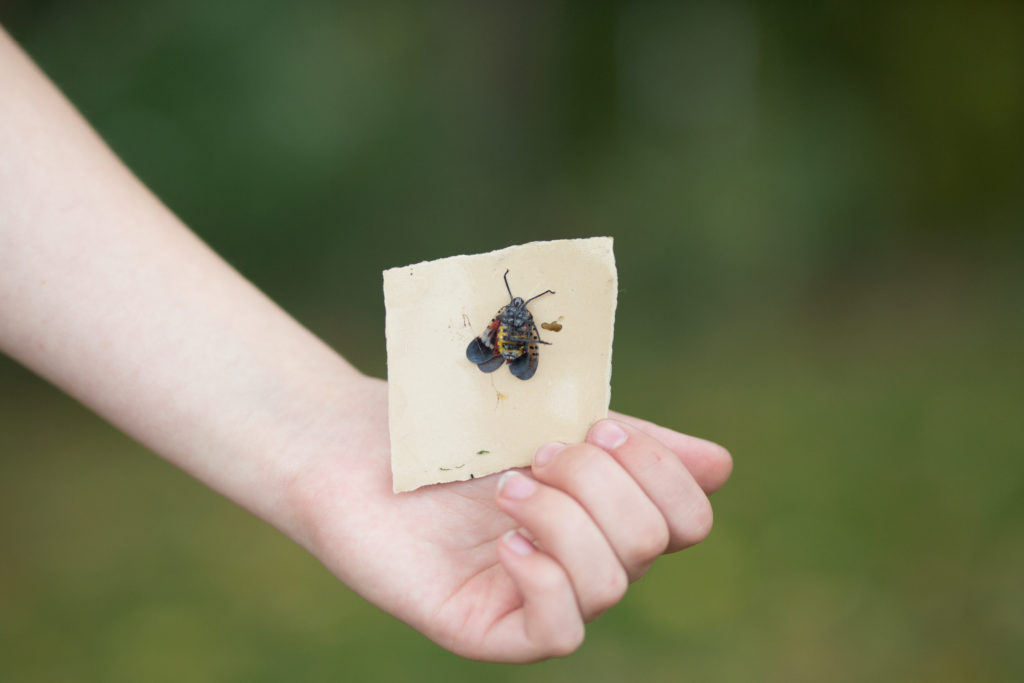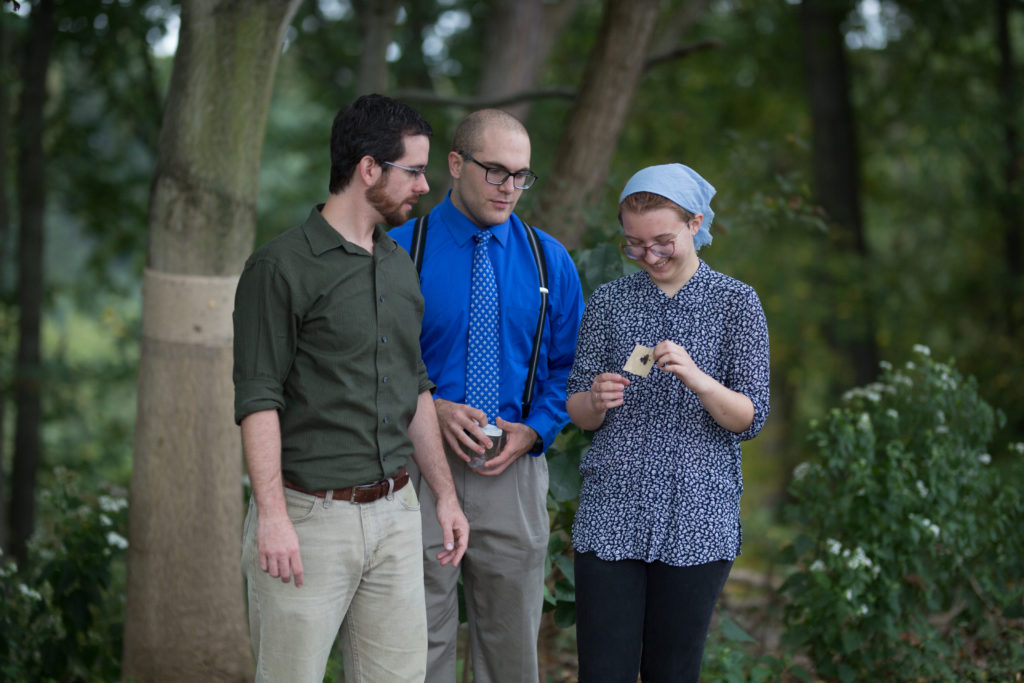

Insect responsible for millions in agriculture, home damage in Eastern U.S.
A spotted lanternfly—feared for its potential to cost hundreds of millions in agricultural damage to grapes, hardwoods, orchard trees, homes, and home landscaping—was captured October 2, 2021, by Franciscan University of Steubenville biology students conducting a student-led research project.
The spotted lanternfly was first sighted a year earlier near railroad tracks in Mingo Junction, an Ohio River town five miles from the Franciscan University campus. The invasive insect was thought to have been eradicated at that time by the Ohio Department of Agriculture.
The recent capture by Franciscan students in Gould, Ohio, an unincorporated area near Mingo Junction, was just three miles from where it was originally found.
Since May when the research project started, Franciscan University biology majors Melody Vetrovec, Denver, environmental science tract; Max Wilson, St. Louis, pre-med tract; and Franciscan University biology professor Dr. Chris Payne have surveyed more than 3,000 trees in Eastern Jefferson County and border counties and have banded about 70 of these trees with stick traps they monitor every 10 days.
Vetrovec and Wilson were counting and inspecting trees October 2 when, “I looked down and, waist high, there was a lanternfly looking up at me,” said Vetrovec.
Wilson quickly helped her capture the insect with a sticky trap. He said he “wasn’t exactly surprised” to find a lanternfly in Mingo Junction, given that one had been found a few miles away a year ago.
“Our goal,” said Payne, principal investigator of the project, “is to support efforts of state agencies to monitor and slow the invasion of this costly insect into our state.”
Since Franciscan University is located near rail and road routes coming west from already infested sites in Pennsylvania and other eastern locations, “we have a unique opportunity to serve as gatekeepers for the entire state,” Payne said.
Lanternflies are known to hitch rides on trains, trucks, vehicles, and construction equipment.
The students’ lone finding, an egg-carrying female, is capable of laying 30-50 eggs at a time, causing populations to quickly balloon into the hundreds or thousands.
If you see a lanternfly, capture or kill the insect and contact your department of agriculture or other state agency, said Payne.
“You can help slow the spread of this invasive inset by making a quick check of your vehicle or anything you are transporting across state lines,” he adds.
About one inch long, adult insects resemble a spotted red, black, and white moth or butterfly when its wings are outstretched.
Dr. Payne teaches courses in the Biology Department’s ecology and environmental concentration, which prepares students for a broad range of careers in the private sector and with government agencies.
The student research project he directs was funded in 2021 by the Franciscan Institute for Science and Health, an institute within Franciscan University’s Science Department.
For more information, or to contribute to continued funding of the research project, contact Dr. Chris Payne at cpayne@franciscan.edu.

